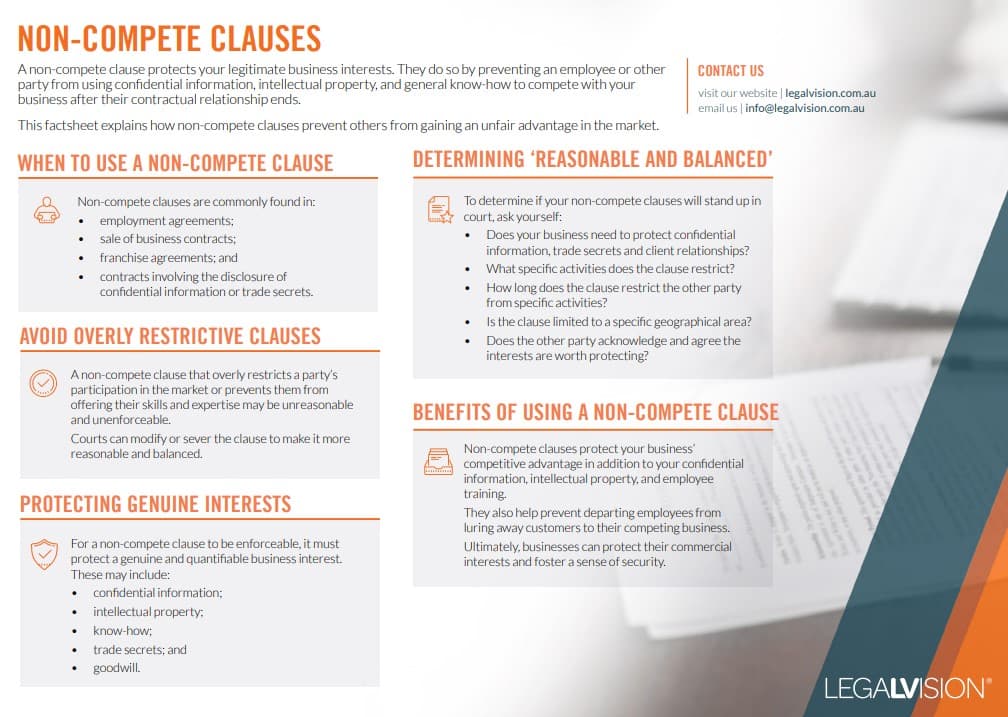In Short
-
Business methods are generally not patentable unless a physical device or technology is involved.
-
A patentable method must be novel, inventive, and backed by proof of concept, such as a working prototype.
-
Non-disclosure agreements (NDAs) and trade marks are viable alternatives for protecting business ideas.
Tips for Businesses
To protect your business method, ensure it meets the criteria for patentability, such as being novel and linked to a physical product. If a patent is not feasible, consider using NDAs, confidentiality clauses in employment contracts, or applying for a trade mark to safeguard your intellectual property.
Have you developed a unique business method or process and want to be able to protect your idea from exploitation? Patent protection may be open to you in limited circumstances. A patent protects an innovative and novel invention that has proof of being turned into a physical device. This article will explain the conditions to patent a process or method, patenting your process or method, as well as available alternative protections.
Thresholds for Applying for a Patent
To be eligible for standard patent protection, your invention must meet the following thresholds:
- it must be novel/new compared to what is already in the public domain (this is known as the ‘prior art’;
- there must be an inventive step; and
- you must have proof of concept, e.g. a working prototype or a written record of how your invention works.
If your invention involves software, you will likely need to meet more strict requirements. This is because analysing whether software code is novel and inventive is a more complex process. Crucially, your invention cannot simply be a computerised method of a process that could be completed by humans.
Patentable Business Methods
You usually cannot patent a process or method, as ideas alone cannot be patented. It must be accompanied by a physical product or device to make it more than simply a concept. If you have applied technology to perform a business method that directly improves or adds value to it, then you could apply for patent protection. Your application and implementation of the method or process must also be novel and inventive.
In Australia, there is some debate about whether you can patent computer-implemented business methods. Generally, your business method must create a ‘technical improvement’ in the computer technology to be patentable.
Non-Patentable Business Methods
Business methods are most often non-patentable. If your method or process is at its conceptual phase and is simply a plan, this is insufficient. Similarly, merely having technology or software in your process is not enough to claim that it is directly involved in creating a useful product. For example, using a computer to create a website does not mean your website creation method is patentable.
Alternative Protection Methods
Business owners who have developed unique business methods or processes within their workplace will often not apply for a patent. Patents are a costly and time consuming investment, and you should consider whether it is worthwhile in your circumstances. Importantly, focus on protecting your idea in other ways, especially at the conceptual stage.
Non-Disclosure Agreements
A non-disclosure agreement (“NDA”) or confidentiality agreement can be a useful tool when discussing with third parties. They form a contractual relationship between you and the party you are sharing your idea with, limiting the ways they can use your idea and who they can tell. When you are at the stage of speaking to investors or manufacturers, having a well-drafted NDA in place is crucial.
Employment Contract Confidentiality Clauses
You may have concerns about employees taking your invention and disclosing it to your competitors or setting up their own competing business. If so, it is essential to include clauses in your employment contract that enforce confidentiality. These clauses can restrain employees from working for competing businesses temporarily after they depart. As a result, your employees are limited in how they use your intellectual property during and after their employment.

This factsheet explains how non-compete clauses prevent others from gaining an unfair advantage in the market.
Other Forms of Intellectual Property Protection
Consider applying for other forms of registered intellectual property protection. For example, if you have developed a unique brand associated with your business method or process, you may consider applying for a trade mark. This will be important if you want to protect your reputation in a competitive industry and do not want anyone passing off as you. A trade mark gives you exclusive rights to your brand and allows you to take action against others who use a similar mark for an alike method.
Key Takeaways
Business methods or processes are generally not patentable subject matter. To be eligible, a piece of technology must help to effect the business method in a unique way, and create a technical improvement in the technology. A patent cannot protect mere ideas, schemes or plans, so your method or process needs to have moved past the conceptual stage. It is often worthwhile to consider other forms of protecting your idea instead, such as an NDA, employment contract confidentiality clause or a trade mark.
Frequently Asked Questions
A patent protects an innovative and novel invention that can be developed into a physical product.
In very limited circumstances, business methods may be patentable. If you have applied technology in such a way to perform a business method that directly improves or adds value to that technology, you could apply for patent protection.
You may consider protecting your idea or method in other ways, such as through trade marks, NDAs or specific clauses in your employment agreements.
We appreciate your feedback – your submission has been successfully received.











